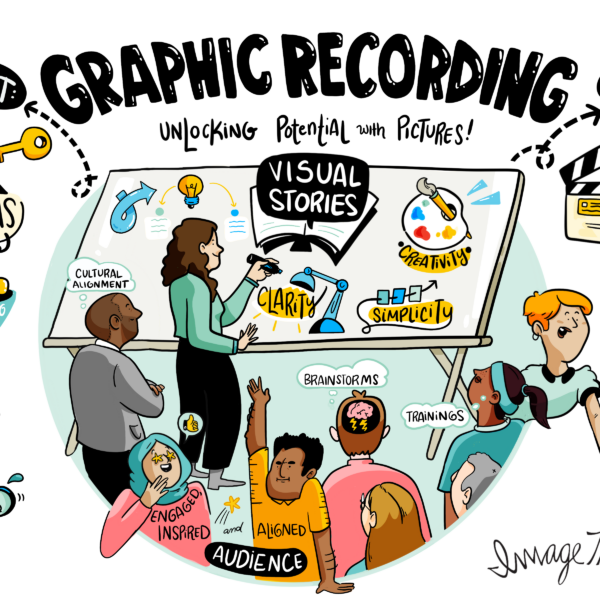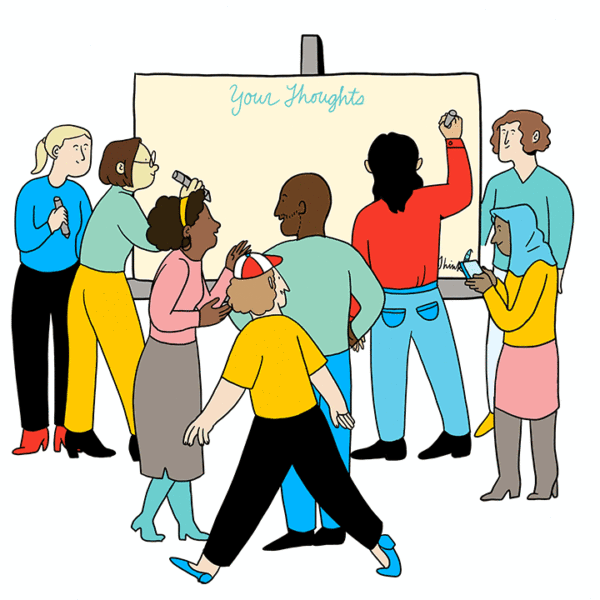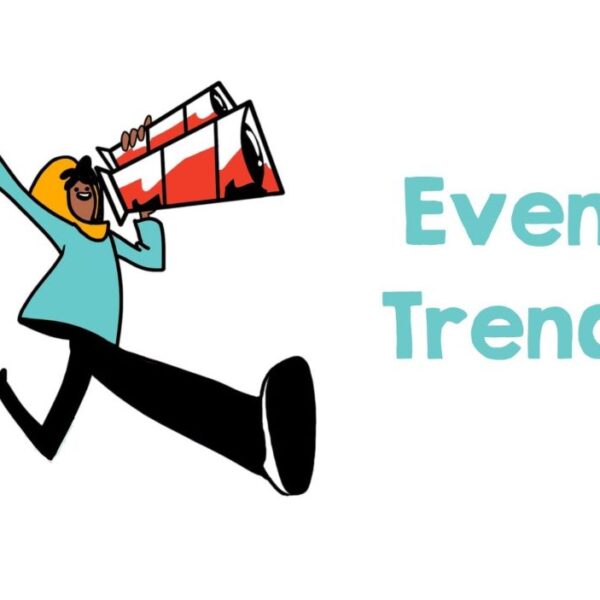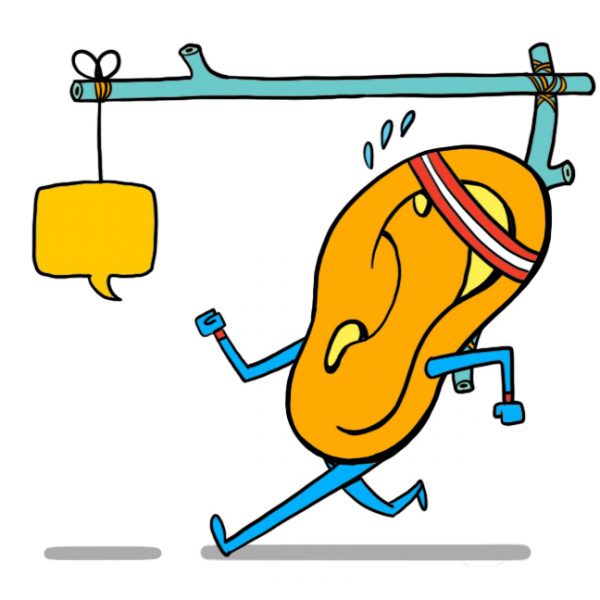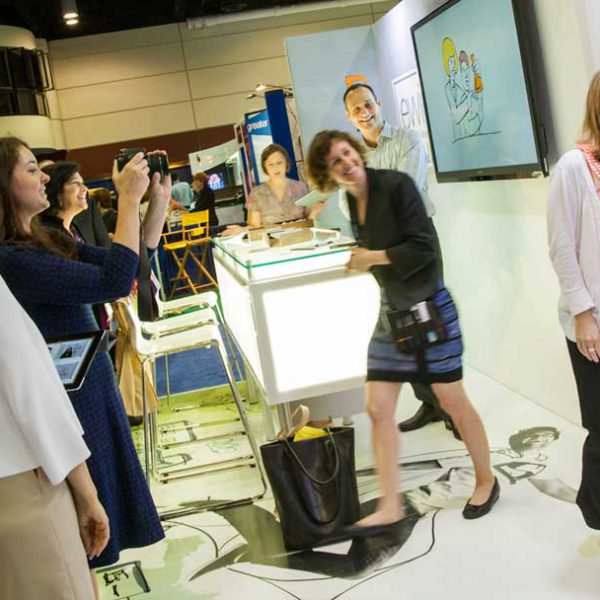At ImageThink, we’ve written a lot about Sponsorship Activations. A key part of many of the events, conferences, and conventions, sponsors provide valuable amenities and opportunities for guests. In return, they attach their brand to thought leadership and can put their name, logo, and product directly in front of a group of professionals in their target demographic.
But in the wake of COVID-19 and the accompanying radical (potentially permanent) reduction in business travel, how do conference and event planners create appealing opportunities for sponsorship activations in online spaces? How do sponsors make an impact with an audience watching through a computer screen?
For years now, ImageThink has invested heavily in technology and training to provide best-in-class service to our clients both in person and online, and for the last few months, we’ve helped clients navigate the choppy waters of online meetings and virtual presentations.
Below, we share what we’ve learned are the best ways to connect attendees, speakers, and sponsors in an online world.
Sharing is Caring, and Visuals Go Viral
What’s the best way to communicate a brand or idea’s value in 2020? Organically shared thought leadership.
Social media continues to be an incredibly powerful tool. Tech companies are making huge invvestments in more complex data analysis and engineering to match content to the right audience, which makes it an incredibly efficient tool for savvy brand marketers.
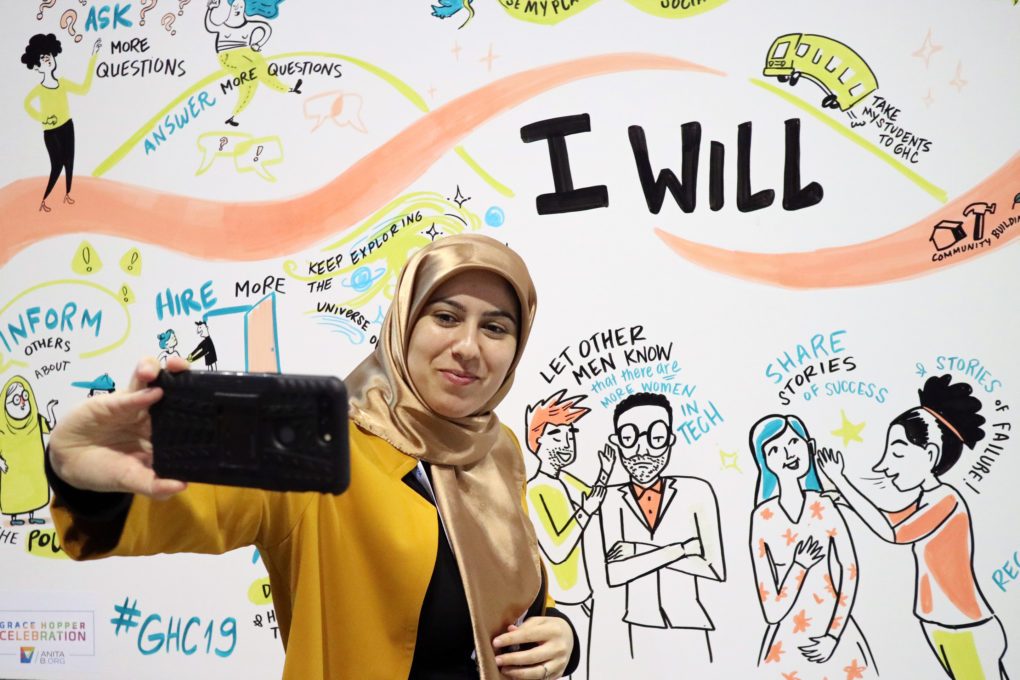
With all the work that is going into translating your event from a real-world destination to an online platform, it’s critical that your content be as exciting, shareable, and visually exciting as possible.
Graphic recording notes and social listening murals we’ve created online are often among the most shared visual content related to the conference.
Moreover, when working digitally, it’s easier than ever to add a sponsor’s logo and name to the boards we create. That helps sponsorship activations appear in more organically shared media when conference planners distribute the digital assets immediately after the live-stream ends.
In a Socially Distanced World, Listening is More Important than Ever
As most of us have learned, you can miss a lot when you’re not in the room with someone. There’s body language, eye contact, and a slew of other non-verbal communications. Some of this is resolved by keeping your camera turned on during virtual meetings, but that comes with its own consequences (Zoom fatigue, tech setups, dedicated lighting, etc…).
The truth is, no matter how well you perfect the practice, meeting online will always be missing the human element. One of the most helpful ways to bring it back is to provide active and clear opportunities for your audience to weigh in.
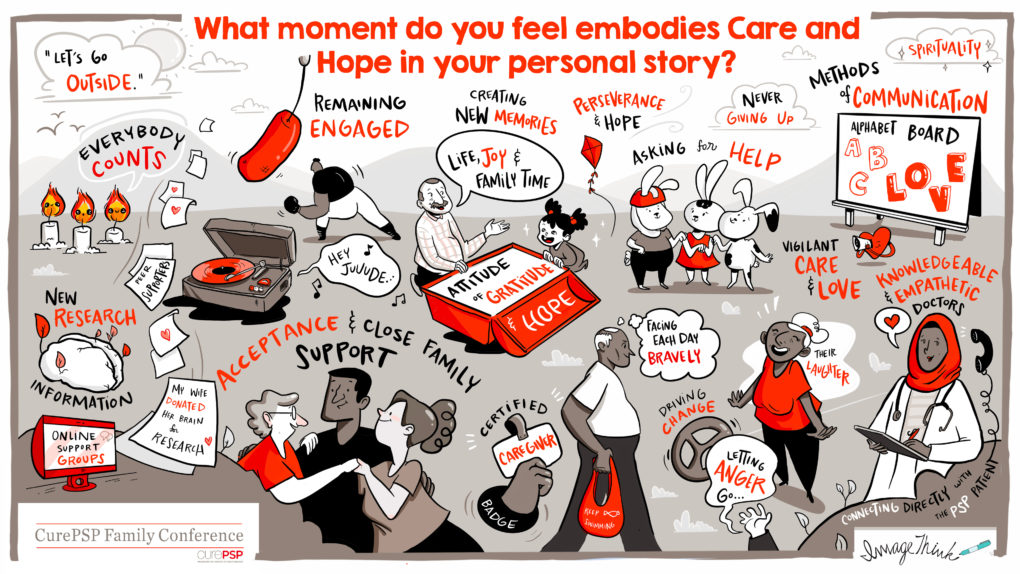
For large events, one of our favorite ways to engage audiences and give them an opportunity to participate directly with your event is through a social listening mural. Featuring a single central question, these murals solicit feedback from your attendees, can get them engaged directly with a sponsor brand, and create an exciting and memorable moment where attendees see their thoughts and feelings heard, documented, and shared.
Plus, when their thoughts become part of the official event record, participants are more likely to pass it on, whether via email, corporate intranet, or on social media, all of which increase the visibility of both your event and your partners.
Graphic Recording as a Booth Booster
Beyond keynotes, session summaries, and panel discussions, graphic recording offers another opportunity to sponsors who are hosting informational trade booths.
Whether it was a product demo, a sales pitch, or a giveaway, booths have long been one of the best lead gen tools out there, offering precious in-person time with potential customers and clients.
But what do you do when there is no booth? When products can’t be held, touched, and examined? How do your sponsors stand out from all the rest with a 2-minute talking head pitch video?
We encourage our clients to add some visual variety and to reinforce the message with vibrant, clear, and dynamic illustrations. Studies show that messages that are directly linked with unique visual stimuli are more likely to be both retained and acted upon. Using visual mnemonics, juxtaposition, or visual dissonance are all effective ways of drawing people in and encouraging them to remember your message.
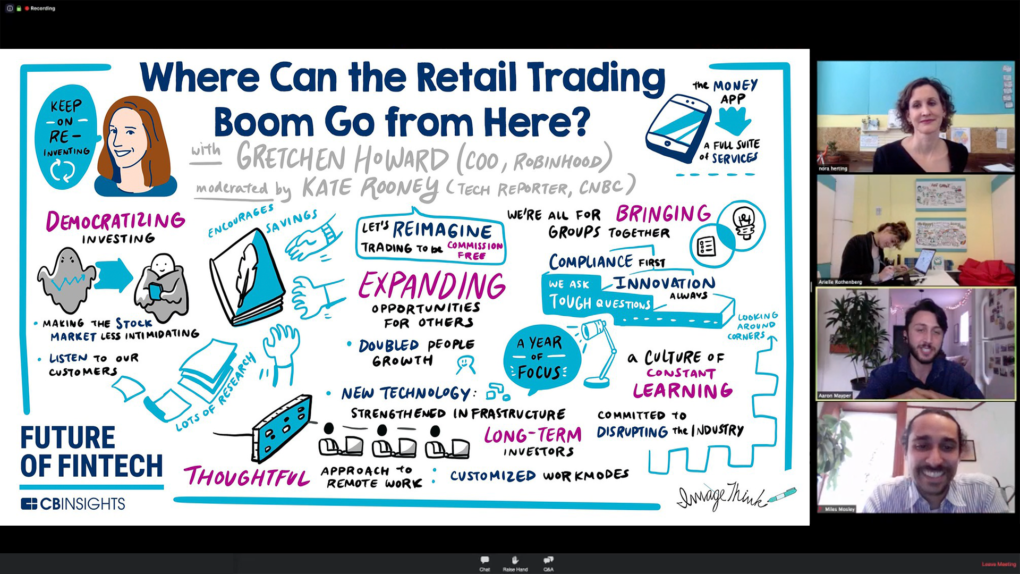
Illustrated infographics, hand-drawn animated explainer videos, and custom virtual backgrounds, all help event sponsors connect and ensure their message resonates in beautiful, clear, and memorable ways with audiences.
What’s more, in instances where conferences are using graphic recording to capture the keynotes, panel discussions, and fireside chats, booth content creates a visual continuity. Content will feel more natively integrated into the experience, rather than a jarring corporate commercial, or slick sales graphics.
Marketing is More Crucial Than Ever
As the waves of the novel coronavirus pandemic continue to ripple and rip through the American economy, businesses are facing serious challenges. Event planners are in an extremely challenging year, trying to reimagine the tangible for a virtual reality.
That said, don’t assume sponsor income is lost for 2020. Big brands need to get in front of eyes more than ever, and virtual events provide the best opportunity to do that while millions of people around the world continue to shelter in place.
When conferences and sponsors team up to lead with value and deliver best-in-class experiences, whether they are in person, or online, attendees remember.
Eventually, we will return to a world wherein we can all be together in person, and people will be grateful for those events, brands, and sponsorship activations that made the endless line of Zoom meetings a bit more fun, a bit more bright, and a bit more memorable.
